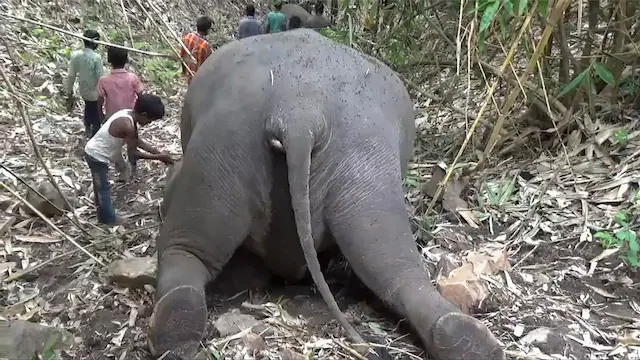Key Highlights
Tragic Loss: Ten Elephants Die in Bandhavgarh Tiger Reserve
In a distressing incident, ten elephants have been found dead in Madhya Pradesh’s Bandhavgarh Tiger Reserve. Preliminary investigations suggest that the consumption of kodo millet, a staple grain in the region, may have led to their demise. This incident has raised significant concerns about wildlife safety and the potential hazards of certain agricultural practices.
Discovery of the Carcasses
The carcasses were discovered during routine patrols by forest officials. Initially, four elephants were found dead, with six more succumbing shortly after. The suddenness of these deaths prompted an immediate investigation to determine the cause.
Kodo Millet: A Potential Culprit
Kodo millet, known scientifically as Paspalum scrobiculatum, is a drought-resistant grain commonly cultivated in parts of India. While it serves as a staple food for many, it is susceptible to fungal contamination, especially during the monsoon season. The presence of certain fungi can produce toxins that are harmful when ingested.
Autopsy Findings
Autopsies conducted on the deceased elephants revealed significant quantities of kodo millet in their stomachs. Additionally, signs of toxicity were evident, leading experts to suspect that contaminated millet was the cause of death. Further laboratory tests are underway to confirm the presence of specific toxins.

Suspension of Forest Officer
In the wake of this tragedy, an Indian Forest Service (IFS) officer has been suspended. Reports indicate that the officer failed to return from leave and was unreachable during critical moments following the incident. This has raised questions about the management and monitoring practices within the reserve.
Wildlife Experts Weigh In
Conservationists and wildlife experts have expressed deep concern over the incident. Dr. Anil Kumar, a wildlife biologist, stated, “The consumption of contaminated food sources by wildlife is a growing concern. This incident underscores the need for stringent monitoring of agricultural practices near wildlife habitats.”
The Role of Kodo Millet in Agriculture
Kodo millet is valued for its resilience and nutritional benefits. It is rich in fiber, proteins, and essential minerals, making it a popular choice among farmers in arid regions. However, its susceptibility to fungal infections, particularly during humid conditions, poses risks not only to human consumers but also to wildlife.
Preventive Measures and Future Steps
In response to the incident, the Madhya Pradesh Forest Department has initiated measures to prevent such occurrences in the future. These include:
- Monitoring Agricultural Practices: Collaborating with local farmers to ensure that crops near wildlife reserves are free from harmful contaminants.
- Wildlife Surveillance: Enhancing monitoring of wildlife health to detect and address potential threats promptly.
- Public Awareness Campaigns: Educating communities about the impact of agricultural practices on wildlife and promoting coexistence strategies.
Broader Implications for Wildlife Conservation
This incident highlights the delicate balance between agriculture and wildlife conservation. As human activities encroach upon natural habitats, the risks to wildlife increase. It underscores the importance of integrated approaches that consider both human livelihoods and wildlife safety.
The tragic deaths of ten elephants in Bandhavgarh Tiger Reserve serve as a somber reminder of the interconnectedness of ecosystems. As investigations continue, it is imperative for authorities, communities, and conservationists to collaborate in safeguarding wildlife from similar threats in the future.
For Latest News Updates Click Here.
